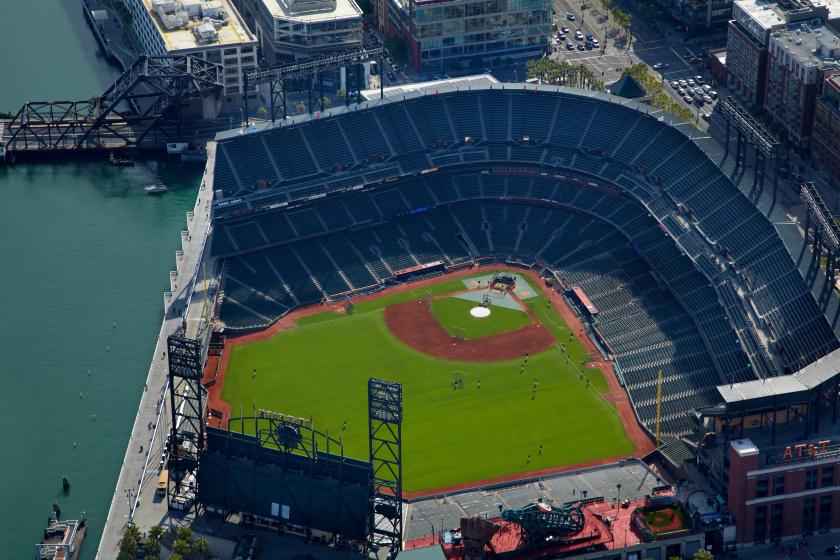A Look into the State of MLB Connectivity with Extreme Networks and San Francisco GiantsA Look into the State of MLB Connectivity with Extreme Networks and San Francisco Giants
Wi-Fi networks in MLB stadiums provide connectivity for fans, concession stands, security, video distribution, broadcasters, roving cameras, iPads for coaches, and much more.

At the end of every baseball season, fans and commentators like to gather around and discuss the woulda-coulda-shoulda’s of the year in excruciating detail. Then there’s Extreme Networks, which powers networking for MLB. They’re all about “Been there, done that.”
Wes Durow, Extreme’s CMO, recently hosted a look back on highlights of Extreme’s successes with Major League Baseball in 2023. Extreme Networks has been the Official Wi-Fi solutions provider for MLB since 2021. Its Wi-Fi analytics is used in all ballparks, and access points are used in most of them, including old facilities, such as Fenway Park, Wrigley Field, and Dodger Stadium, where the Wi-Fi needs to be engineered around a lot of concrete and metal.
One resounding victory was All-Star weekend in July when the company connected 155,000 devices and transferred 47.3 terabytes of data over three days. I attended the All-Star Weekend in Seattle and can attest to the massive number of people there, most of whom were Tweeting (X-ing), Instagramming, and other activities that required good, quality Wi-Fi.
“We saw big numbers at the All-Star Game and the Home Run Derby,” he said. “We can track what people are using app-wise. We’ve got some markets that are Instagram and Twitter and others that are Facebook and Snapchat. We get great insights from that.”
As Durow introduced Bill Schlough, SVP and CIO of the San Francisco Giants, he noted that the Giants were early adopters of Wi-Fi. “In 2004, Wi-Fi was something that enabled you to connect by inserting a card into your laptop, or if you were an early adopter back, then you might have had a Compaq iPAQ, or a Palm Pilot that you would bring to the ballpark,” Schlough said. “The iPhone was in someone’s imagination then, but we weren’t aware of it. It didn’t come out until 2007. So back then, Wi-Fi was a novelty for our fans.”
Now, they’re on the fourth or fifth generation of Wi-Fi in the ballpark, working closely with Extreme. “We decided it was time for an upgrade,” he said. “And we moved to a Wi-Fi 6E network, the first in all professional sports. We’ll be proud to partner with Extreme on that, and it has gone extremely well—pun intended—for our fans, with 879 new access points at our park.”
Beyond connectivity: MLB network leveraged for other purposes
The network is at the center of the ballpark for the Giants, enabling connectivity for fans, concession stands, security, video distribution, broadcasters, roving cameras, iPads for coaches, and much more. Schlough noted that the network is about more than the connectivity. It’s also about capability and insights. Knowing what people are watching and how they use the network is critical. He said things have come far since joining the Giants in 1999.
“When I first started, we were tracking the speed of a pitch with a radar gun that a cop would use on you on the street,” he said. “And it tracked the speed of a pitch at one point along the way.”
Soon, they were tracking the ball with video cameras at every step. “So, I was like, ‘Well, you can’t go any further than that.’ Then, we started tracking the spin on the ball. And I’m like, ‘Well, that’s the ultimate. You’re tracking the spin rate.’ Then, we tracked exit velocity. Then, we tracked the players on the field. And I was like, ‘Okay, that’s the end.’”
But there is no end. So what’s next? Schlough thinks the potential for AI and ML is significant across all business areas. The Giants track everything, and 5G connectivity will be a key enabler. He thinks that 5G will win over Wi-Fi in the long run. But he says that his team will cover all the bases for now. In my opinion, cellular may eventually displace Wi-Fi, but that won’t be for many years. Wi-Fi is easy to deploy and has reached ubiquity as Wi-Fi radios can be integrated into devices for a much lower cost than cellular.
“We feel like the venue and the fans need all of it right now,” he said. “It’s not cheap to deploy, but connectivity is paramount, and they all serve a purpose. 5G serves the common fans at our ballpark. But if you want high-bandwidth content, you want to be streaming other events, and you're going to go to the Wi-Fi.”
The future of sports is connectivity. And Extreme Networks has stepped up to the plate for MLB. There are few companies as engaged with their customers. And it’s great to see the highlights of 2023 underscore that.
In 2024, the Giants and my hometown Red Sox may duke it out in the World Series. Then again, maybe not. But one thing is certain: Fans in most ballparks across the country will connect their devices using Extreme.
Zeus Kerravala is the founder and principal analyst with ZK Research.
Read his other Network Computing articles here.
Related articles:
About the Author
You May Also Like




